Physical Address
304 North Cardinal St.
Dorchester Center, MA 02124
Physical Address
304 North Cardinal St.
Dorchester Center, MA 02124
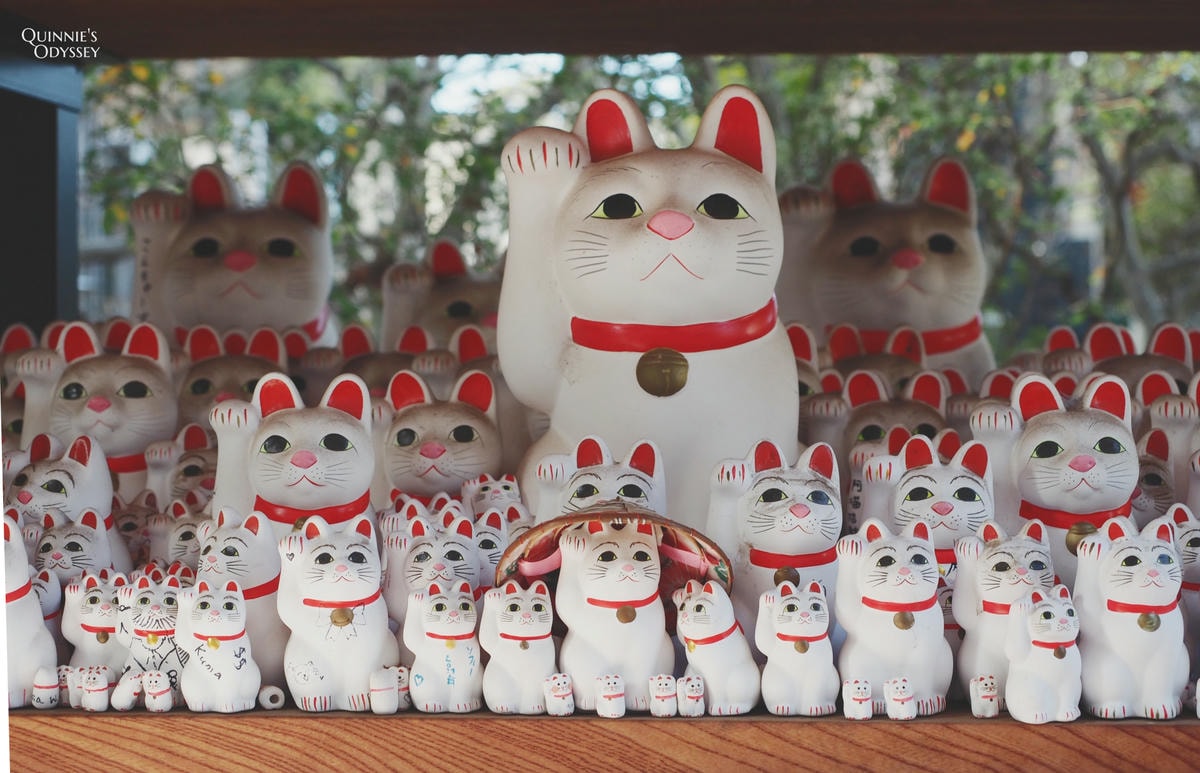
In Japan, cats have long been regarded as mysterious and enchanting creatures.
As early as the Nara period, Japanese envoys to Tang China brought cats back to Japan to protect the valuable texts they imported from being damaged by mice.
Over time, cats became both pets and protectors. In addition to being seen as animals capable of warding off evil spirits, they also came to symbolize good fortune and prosperity.
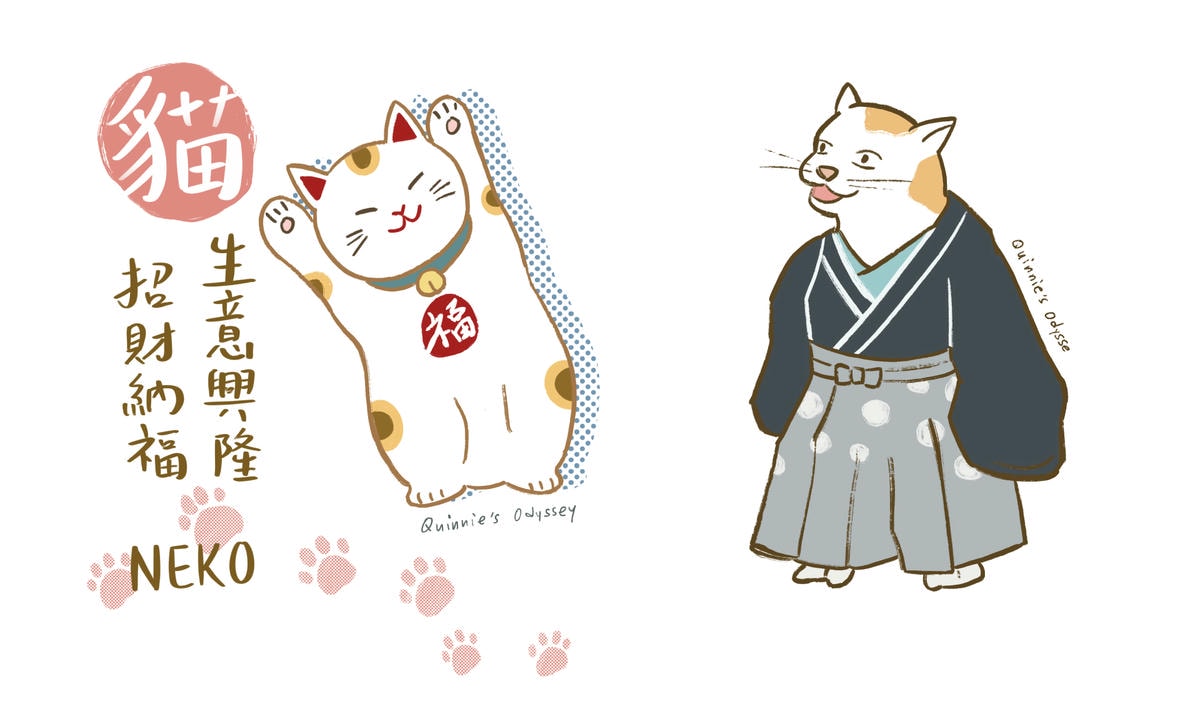
In Japanese folklore, cats are often endowed with spiritual qualities, depicted as beings that can predict the future or bring blessings.
This perception of cats as cute and mystical helped spread stories about them, with the most famous being that of the “maneki-neko” (beckoning cat), believed to bring luck and wealth with its raised paw.

When discussing the origins of maneki-neko, Gotokuji Temple in Setagaya, Tokyo, stands out.
Known as one of the birthplaces of the beckoning cat, Gotokuji boasts a long history and legend, with over a thousand beckoning cat statues enshrined there.
In its early days, Gotokuji was called Koutokuin and was a poor, remote temple. During the Edo period, the temple’s chief priest had a cat named Tama.
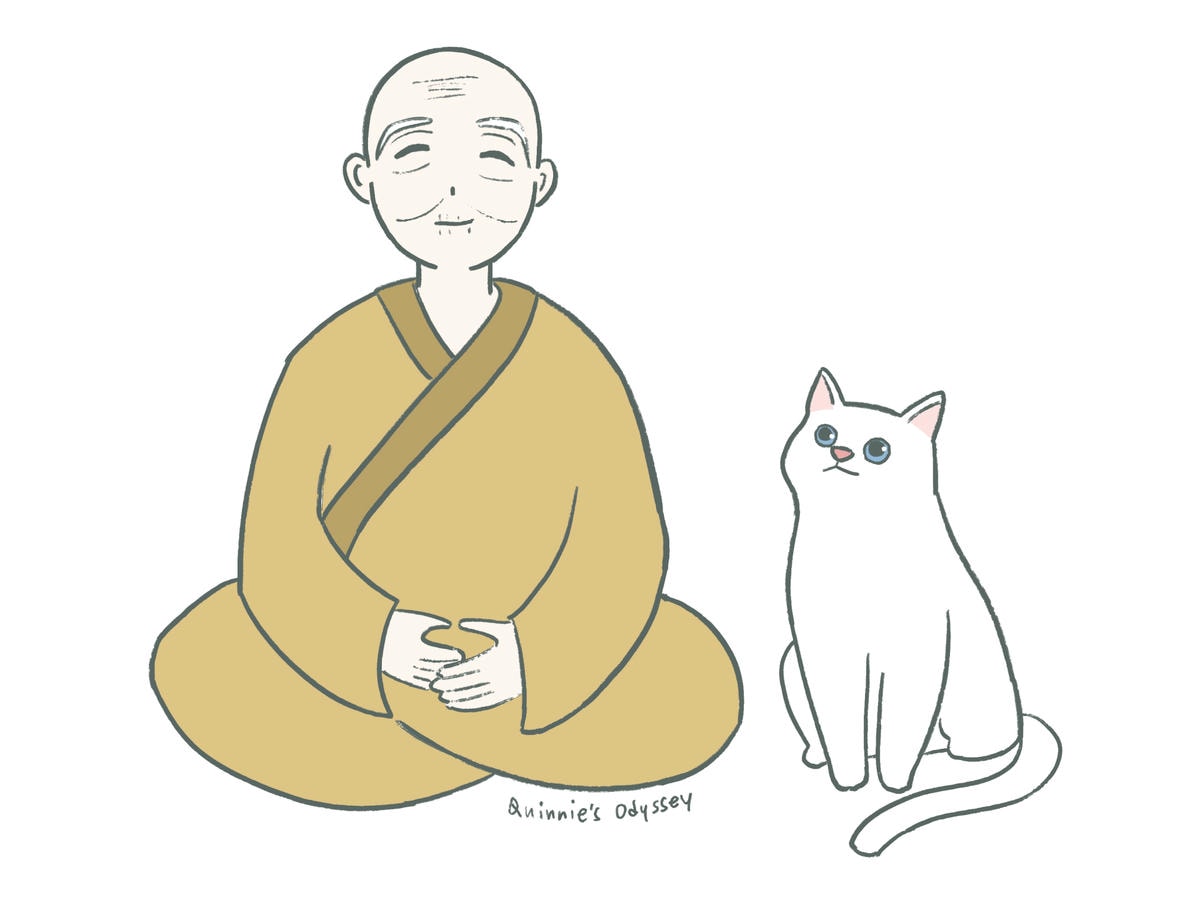
One day, the priest jokingly said to Tama, “Could you bring some good fortune to this poor temple?”
A few days later, Ii Naotaka, the lord of Hikone Domain, happened to pass by the temple while hunting. He saw the cat beckoning to him from inside the temple, so he followed it in.
Just as he entered, it began to rain heavily.
While sheltering from the rain, the lord had a pleasant conversation with the temple’s monks.
He said to the priest, “This cat brought us into the temple and allowed us to avoid the rain. Perhaps this is fate.”
Thereafter, Lord Ii made Gotokuji the ancestral temple of the Ii family and renamed it Gotokuji after his posthumous Buddhist title, “Kyushoinden Gotoku Ten’ei Koji.” Under the Ii family’s patronage, the temple prospered.
When Tama eventually passed away, the priest buried the cat within the temple and built a “Shofukuden” (Good Fortune Hall) to enshrine Kannon, the Goddess of Mercy.
To this day, visitors can see thousands of white beckoning cat statues at the Shofukuden in Gotokuji.
You can reach Gotokuji Temple by taking the Odakyu Line from Tokyo’s Shinjuku Station to Gotokuji Station. Upon exiting the station, a beckoning cat statue greets you. A 10-minute walk through narrow alleys will bring you to Gotokuji Temple.
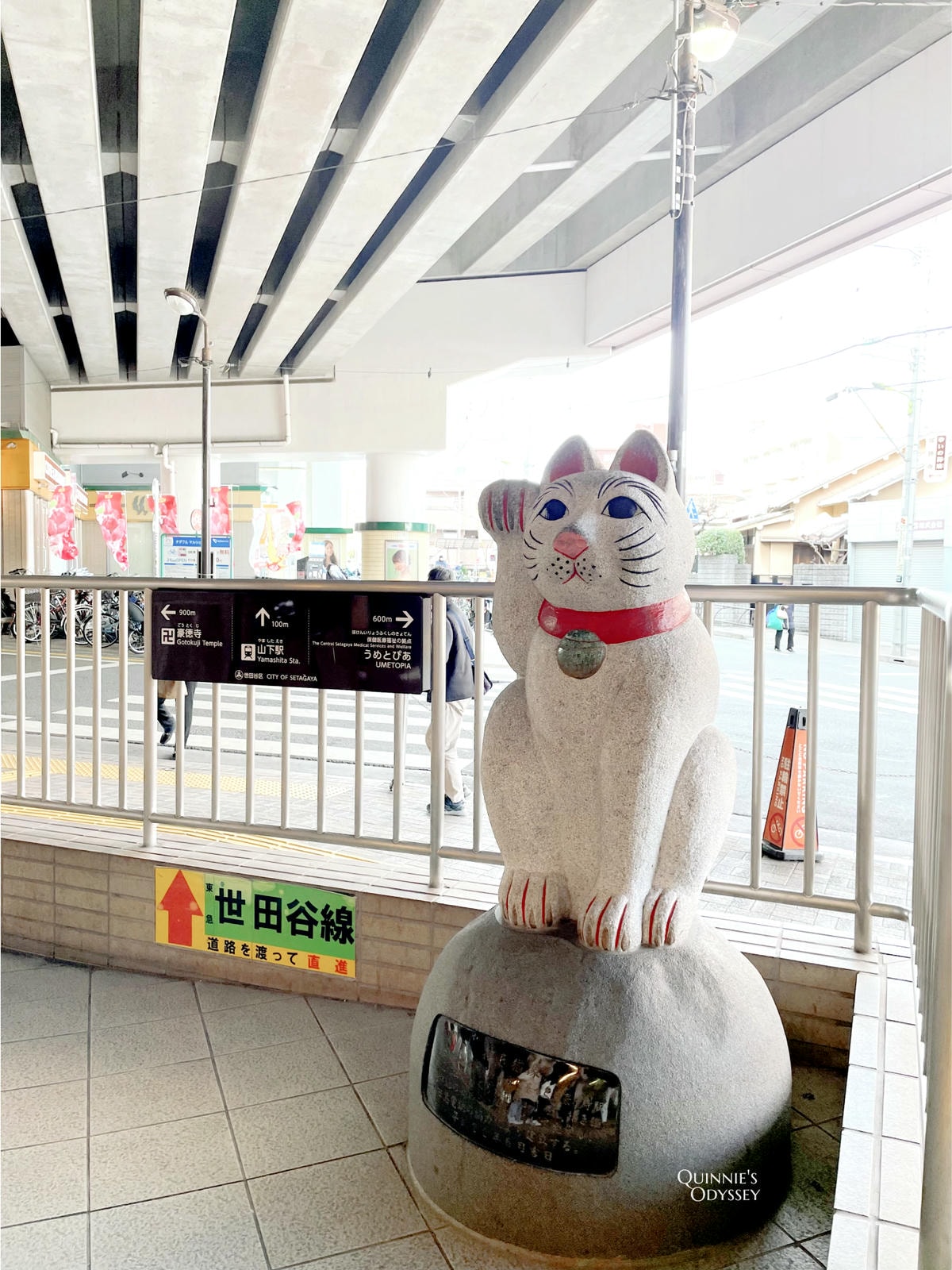
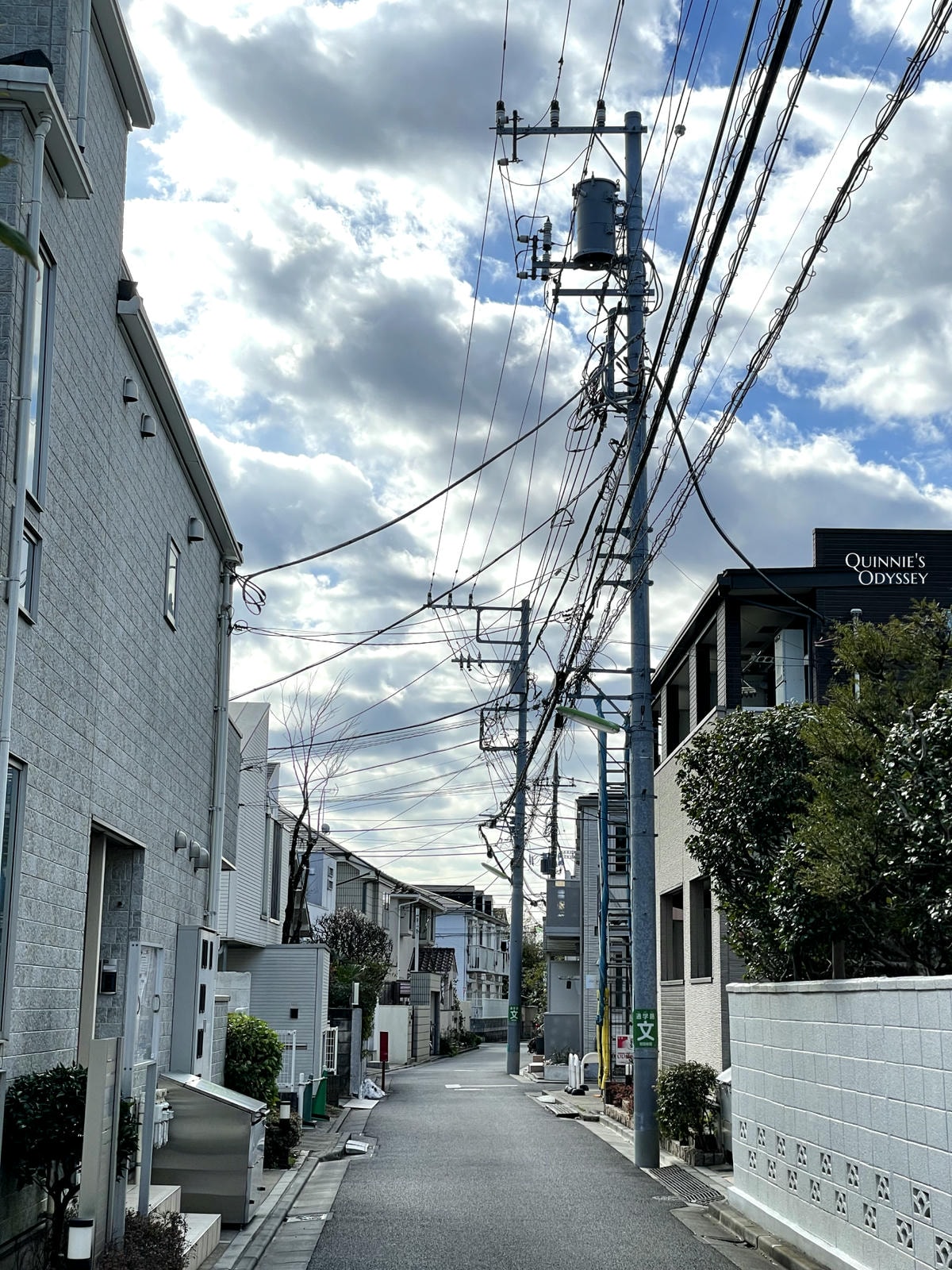
Alternatively, you can take the Tokyu Setagaya Line to “Miyanosaka Station,” and you might even be lucky enough to ride the cute beckoning cat-themed train!

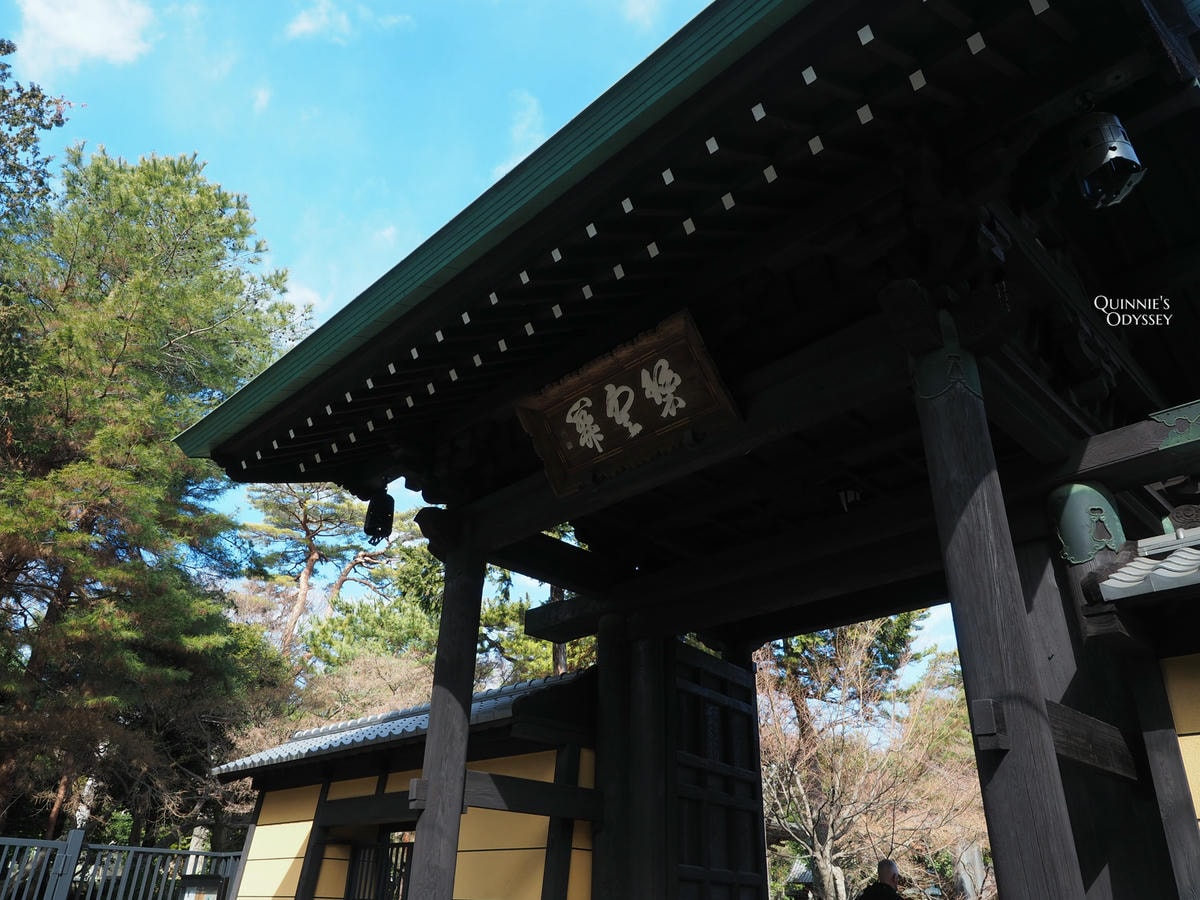
The shelves full of beckoning cats are a major reason why people visit Gotokuji.
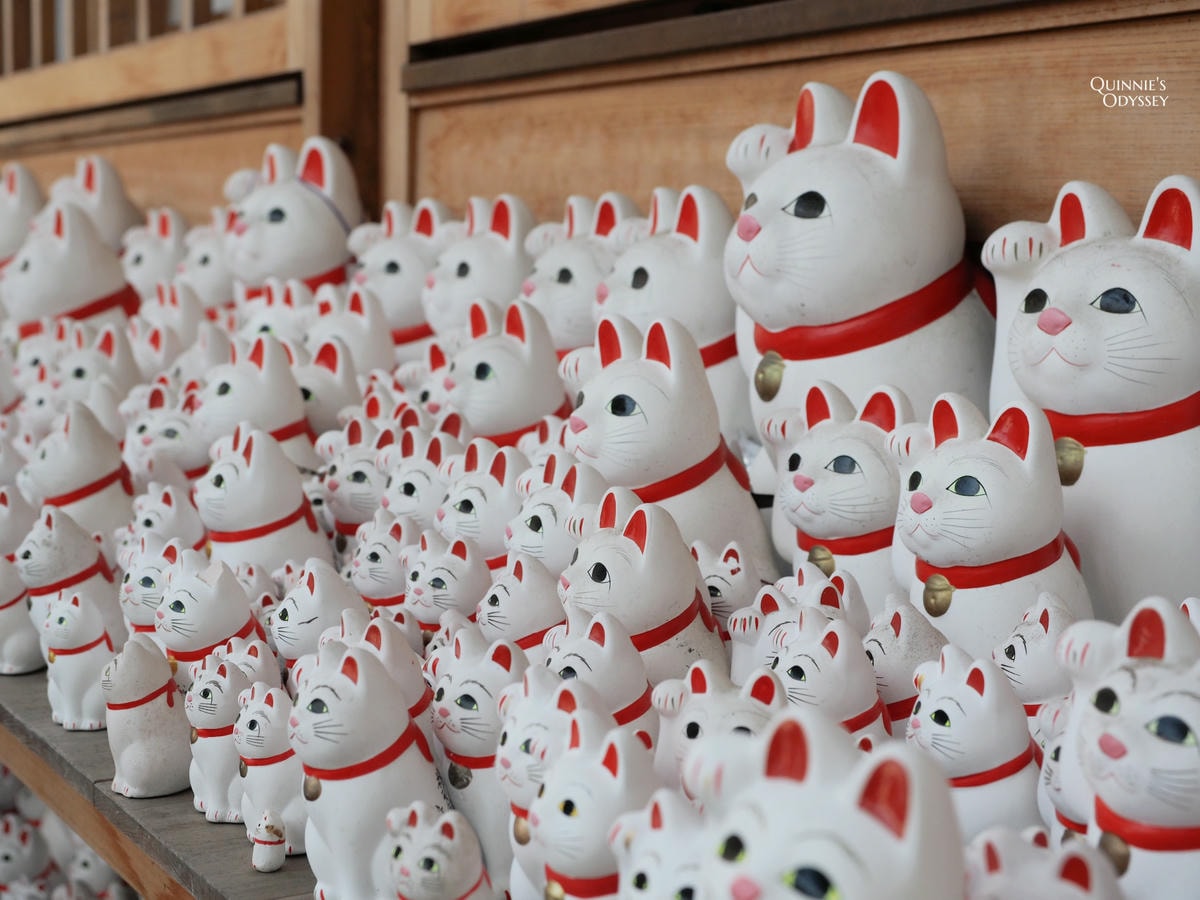
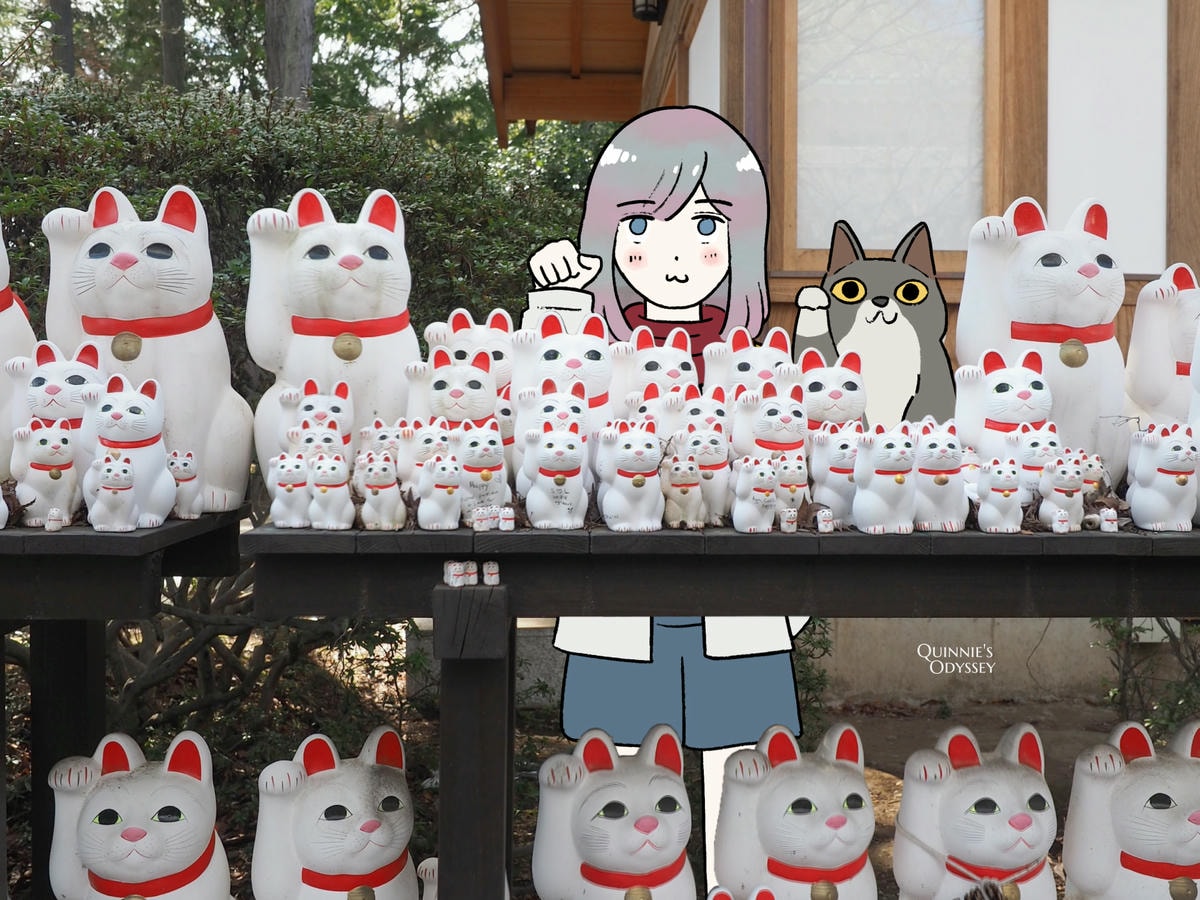
The process of wishing with a beckoning cat is somewhat similar to that of daruma dolls.
First, you purchase a beckoning cat from Gotokuji, make a wish, and once the wish comes true, you return the cat to the temple in gratitude.
The numerous cats on display are those that people have returned after their wishes were fulfilled.
(For details on the daruma doll wish-making process, see 👉👉 Katsuo-ji Temple: Daruma Dolls and Cherry Blossoms in Osaka )
Gotokuji offers beckoning cats in nine different sizes, ranging from 2 cm to 30 cm.
Prices range from around 500 yen to 7,000 yen.
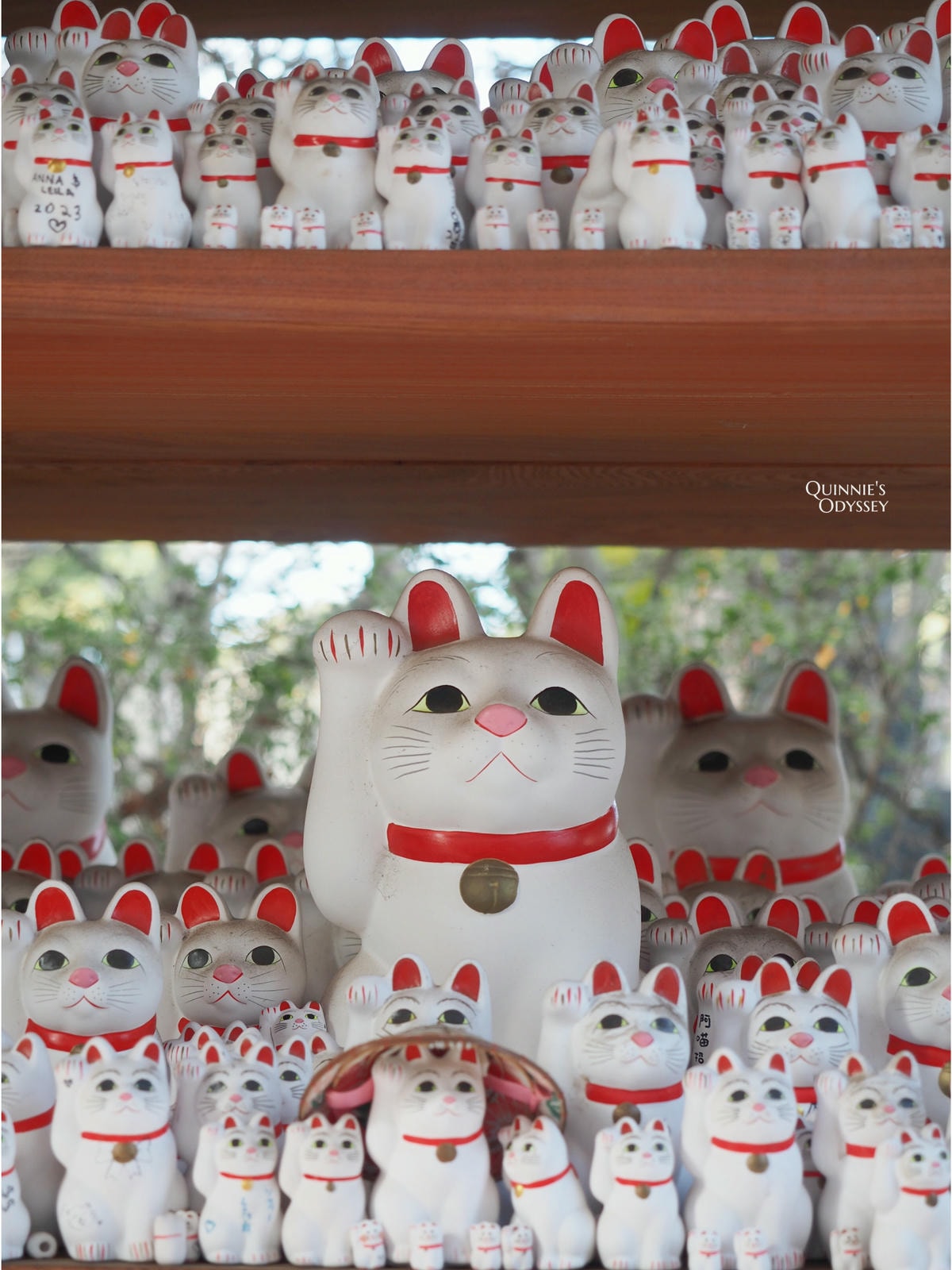
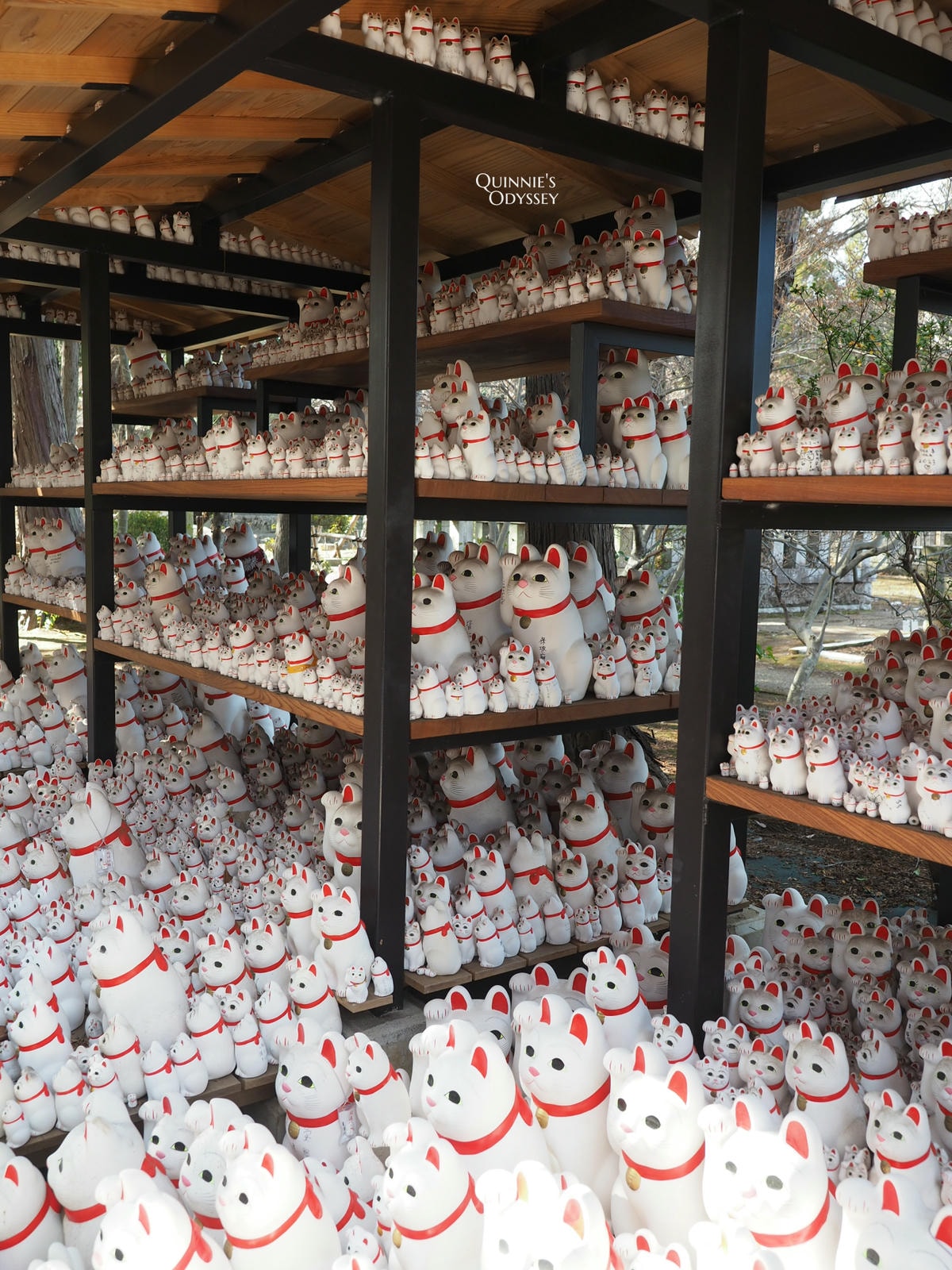
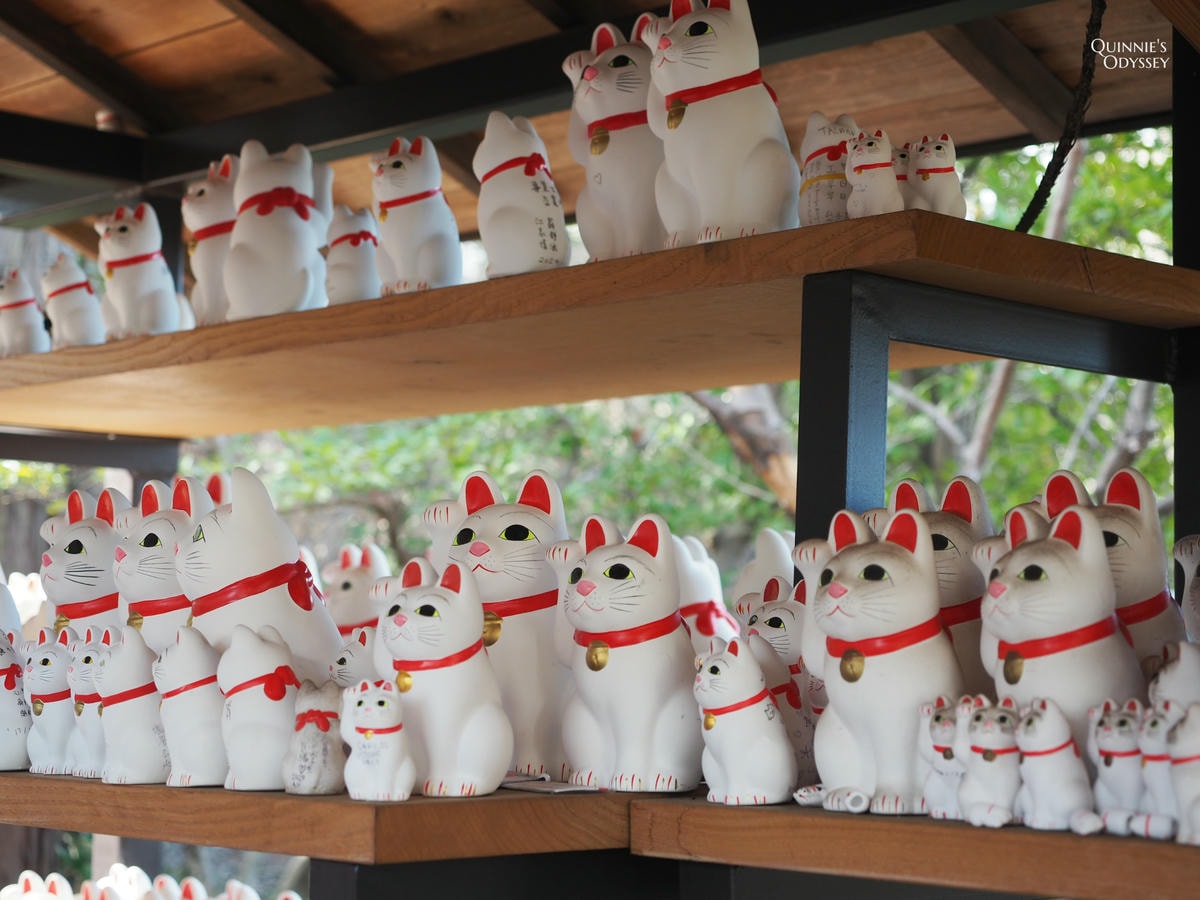
Many people assume that all cats with raised paws are maneki-neko.
However, traditional maneki-neko are actually divided into male and female.
Male cats raise their right paw and symbolize inviting good fortune and blessings; they are called “shofuku-neko” (good fortune cats). Female cats raise their left paw, often holding a small coin, symbolizing an invitation for people (and, in turn, wealth); these are the true “maneki-neko.”
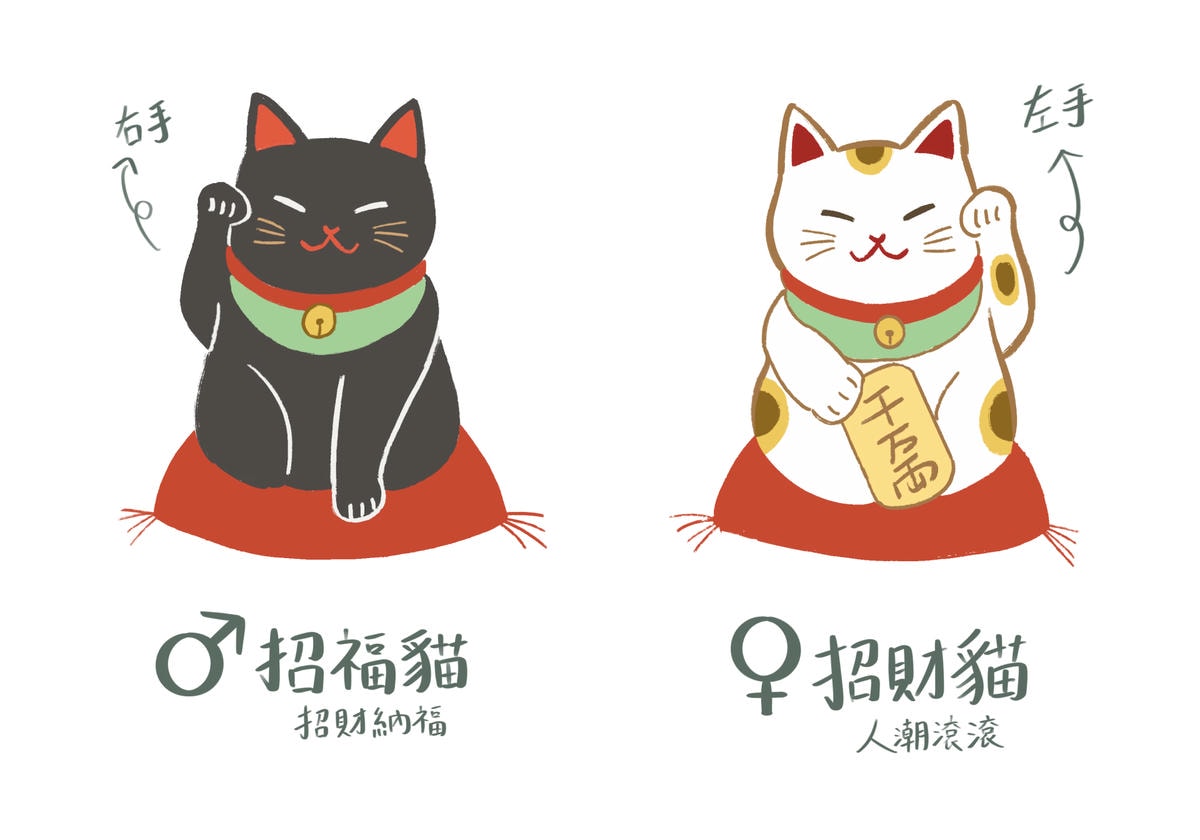
Most businesses display female maneki-neko because attracting people also brings money.
At Gotokuji, however, all of the over 1,000 cat statues raise their right paw, symbolizing good fortune.
One explanation for this is that the Ii family were samurai, and raising the left hand could be seen as disrespectful to samurai. The right hand, which is used for combat, was seen as representing positive and proper behavior, while the left was considered to imply distrust or hostility.
Another interpretation is that while the left hand invites wealth, the right hand invites good fortune. Gotokuji’s shofuku-neko are mainly meant to invite “good fortune,” leaving the attainment of wealth to one’s own efforts.
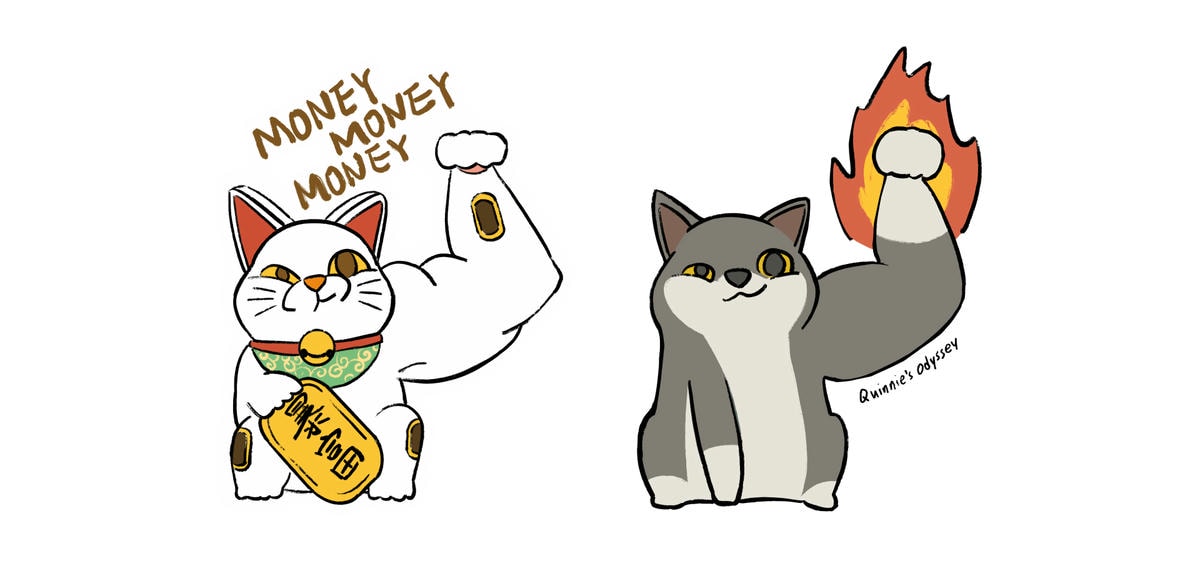
The colors of maneki-neko each hold different meanings.
White: Invites good fortune and happiness
Black: Protects against evil and brings peace
Gold: Represents prosperity and financial success
Pink: Symbolizes love and romance
Red: Brings good health
Green: Promotes academic success
Blue: Signifies career success
Yellow: Symbolizes finding good relationships

February 22nd is Japan’s special day for cats because “222” sounds like a cat’s meow in Japanese.
This holiday, established in 1987 by the Japan Pet Food Association, celebrates the peaceful coexistence of humans and cats.
On this day, cat lovers flood the internet with pictures of their beloved pets, and many businesses offer cat-related promotions.
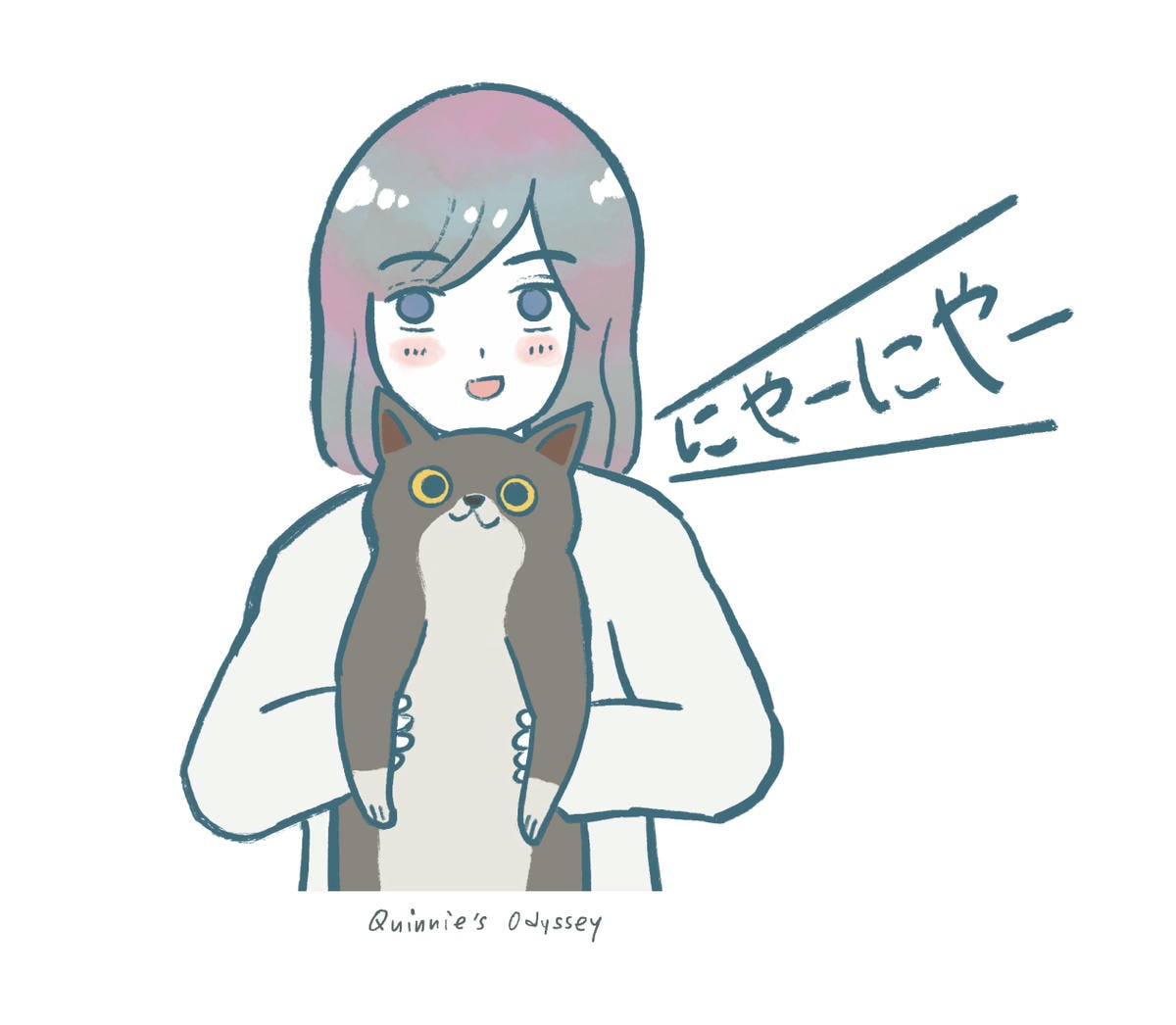
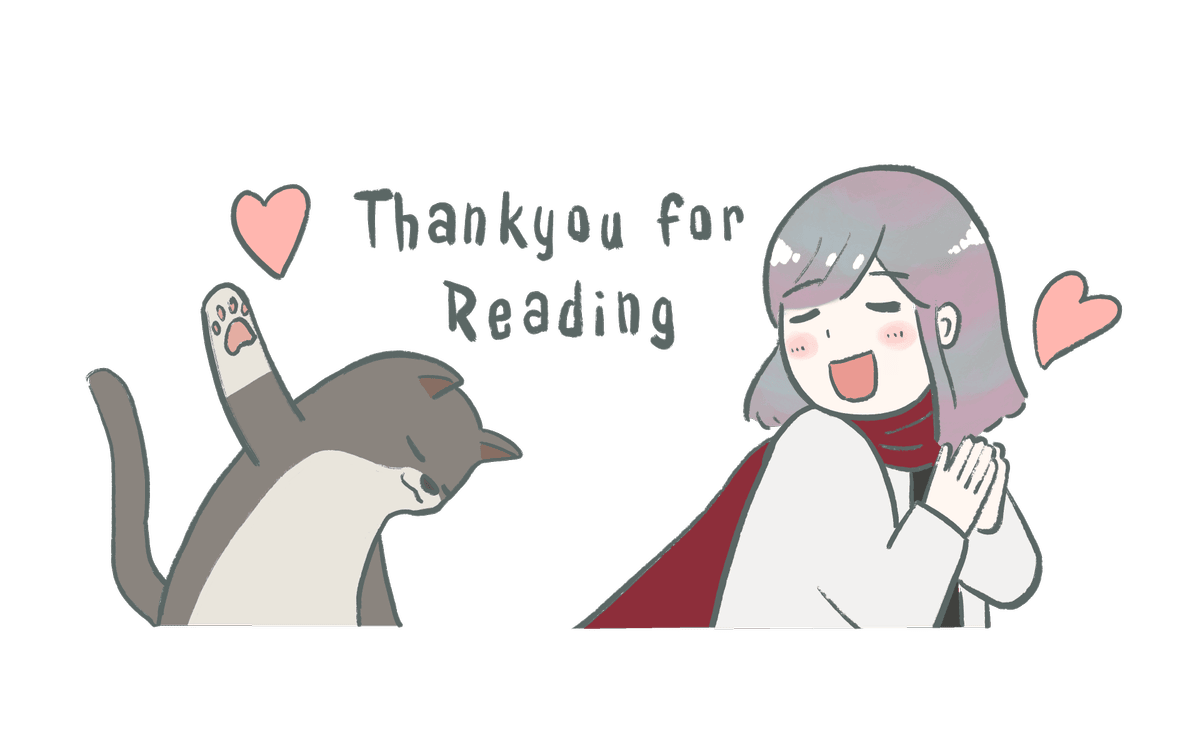
謝謝觀看,如果對我的圖文有興趣,歡迎追蹤 IG,或訂閱 e-mail
👉👉 IG: @sika_artist 👈👈